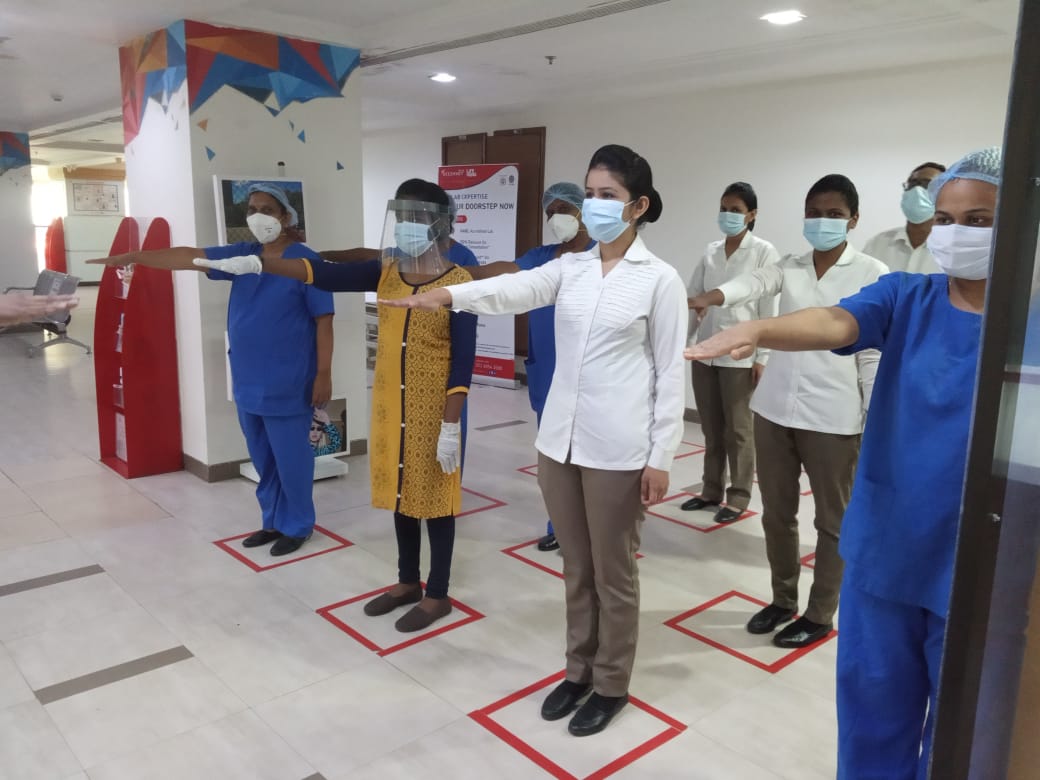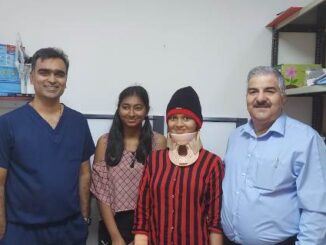
A team headed by Dr Amit Sahu, Senior Consultant, Neuro & Peripheral Interventional Radiologist, Wockhardt Hospital, Mira Road successfully performed a complex minimally-invasive procedure on a middle-aged footballer with Peripheral Vascular Disease (PVD), also known as Peripheral Arterial Disease (PAD). This condition led to narrowing and blockage of blood vessels to the foot due to which a non-healing wound with foot infection was seen in the patient. This minimally invasive procedure helped to open blockages and restore blood flow to avoid gangrene and amputation. Now, the patient has resumed his daily routine and will start playing football soon.
Mr Bosco an active football player was a diabetic on medication. He started having wounds on his left foot that refused to heal and showed no signs of improvement. The wounds caused pain, swelling, watery discharge, and foul smell making it difficult to walk and play football. This interfered with his daily routine. The patient was alarmed when there was a sudden increase in redness, swelling, pain, and oozing of pus. When he visited Wockhardt Hospital, a rapidly spreading left foot infection was identified. He underwent an emergency debridement by Dr Pratap Nadar, Consultant Plastic Surgeon to remove the infected tissue and control spread.
On further assessment by Dr. Amit Sahu with Colour Doppler Sonography & peripheral angiography, he was found to have Peripheral Vascular Disease (PVD) causing severe blockages in the blood vessels (arteries) with no major blood vessel supplying blood to the foot. Due to poor blood flow to the foot, he was at risk of the wound not healing and progressing to gangrene which may require amputation of the leg.
Dr. Amit Sahu, Senior Consultant, Neuro & Peripheral Interventional Radiologist, Wockhardt Hospital, Mira Road said, “Peripheral Vascular Disease (PVD) is a blood circulation disorder common in diabetics that results in narrowing of any blood vessels outside of the heart, like those supplying blood to legs, arms, brain, and kidneys. As a result of narrowing, the organ may not get sufficient blood to function adequately. Legs and feet are most affected by PVD. Initially, patients with leg PVD may have pain in legs, cramping on walking, numbness which may progress to pain even on resting, development on non-healing wounds, and eventually gangrene which may need an amputation. This patient had PVD with a foot infection which was rapidly progressing. An open surgical vascular bypass in him was not feasible. So, a complex peripheral angioplasty procedure on several blocked vessels was performed to open these and improve blood flow to the foot.”
Dr Sahu added, “The patient underwent successful plain balloon angioplasty of the occluded arteries from the level of his knee up to his foot – the popliteal artery, tibio-peroneal trunk, common peroneal artery, and posterior tibial arteries. Additionally, drug-coated balloon angioplasty was also performed which delivers drugs at the local site to prevent late restenosis & achieve good long-term results. Good blood perfusion to the foot was successfully restored by this procedure. The entire procedure being minimally invasive (done from a small pin-hole injection) could be performed under local anesthesia with the patient being awake and comfortable throughout the procedure. The procedure lasted roughly one and a half hours. The patient was discharged a few days later when the wound infection was settled. On follow-up, he continued to have regular wound care with eventual healing of the wound. A timely intervention, thus, saved him from an amputation that would have resulted in disability, and he would have been unable to play football. In patients where amputation is unavoidable because of advanced changes of gangrene, it is equally important to improve blood circulation by peripheral angioplasty so that the amputated stump healing is promoted, else it may develop gangrene too. It is vital to have an Interventional Radiology consultation in all patients with PVD and diabetic foot during treatment planning.”
“I was shocked to notice wounds on my left foot while playing football. Initially, I didn’t pay any heed as I thought it may go away on its own. After some days, I noticed that there was increasing swelling and pus discharge. I was alarmed and consulted a doctor as the wound refused to heal, and there was a continuous watery discharge from the wound with a foul smell. I couldn’t do my daily chores with ease and also had to stop playing football. I would feel embarrassed as I had to keep cleaning the wound, and people around me would notice it. The wound was not healing owing to Peripheral Vascular Disease resulting from diabetes. I thank the doctors at Wockhardt Hospital for saving my foot from potential gangrene and amputation. My life would have become miserable, and I wouldn’t have been able to play football or do other activities if I would have lost my leg. I am looking forward to resuming playing soon. I want to urge others like me to avoid neglecting wounds, or even slightest changes in the foot,” concluded patient Bosco.
BOX:
Risk factors of PVD: Age over 50 years, women after attaining menopause, being overweight, diabetes, not exercising, having high cholesterol, heart disease, kidney disease, high blood pressure, smoking, and substance abuse.
How To Prevent & Treat PVD?
· Lifestyle changes to control risk factors, including regular exercise, proper nutrition, quitting smoking, and alcohol.
· Regularly examine your legs and feet for sores, changes in skin color, and practice good foot hygiene.
· Aggressive treatment of existing conditions that may worsen PVD, such as diabetes, high blood pressure, and high cholesterol.
· Medicines to improve blood flow like blood thinners (anti-platelets agents).
· It is also equally important to screen patients at high risk to identify the blockages and their severity so that early treatments can be initiated.
· Interventional treatments like angioplasty and stenting, whenever indicated, are very effective in restoring the blood flow so that progression of disease does not happen, healing of wounds is promoted, and amputation can be avoided. Amputation not only leads to disability but also increases the risk for other medical conditions.



